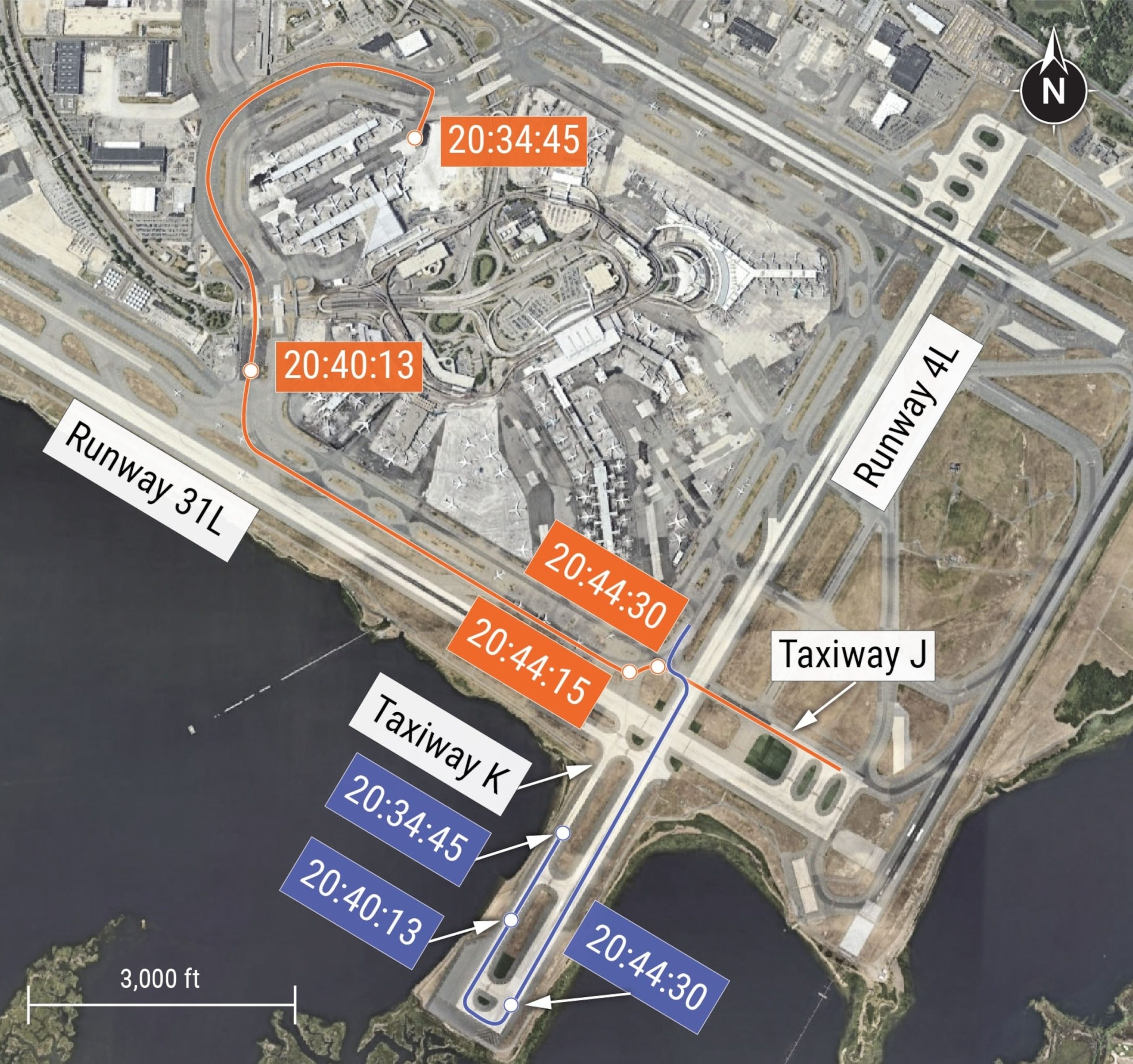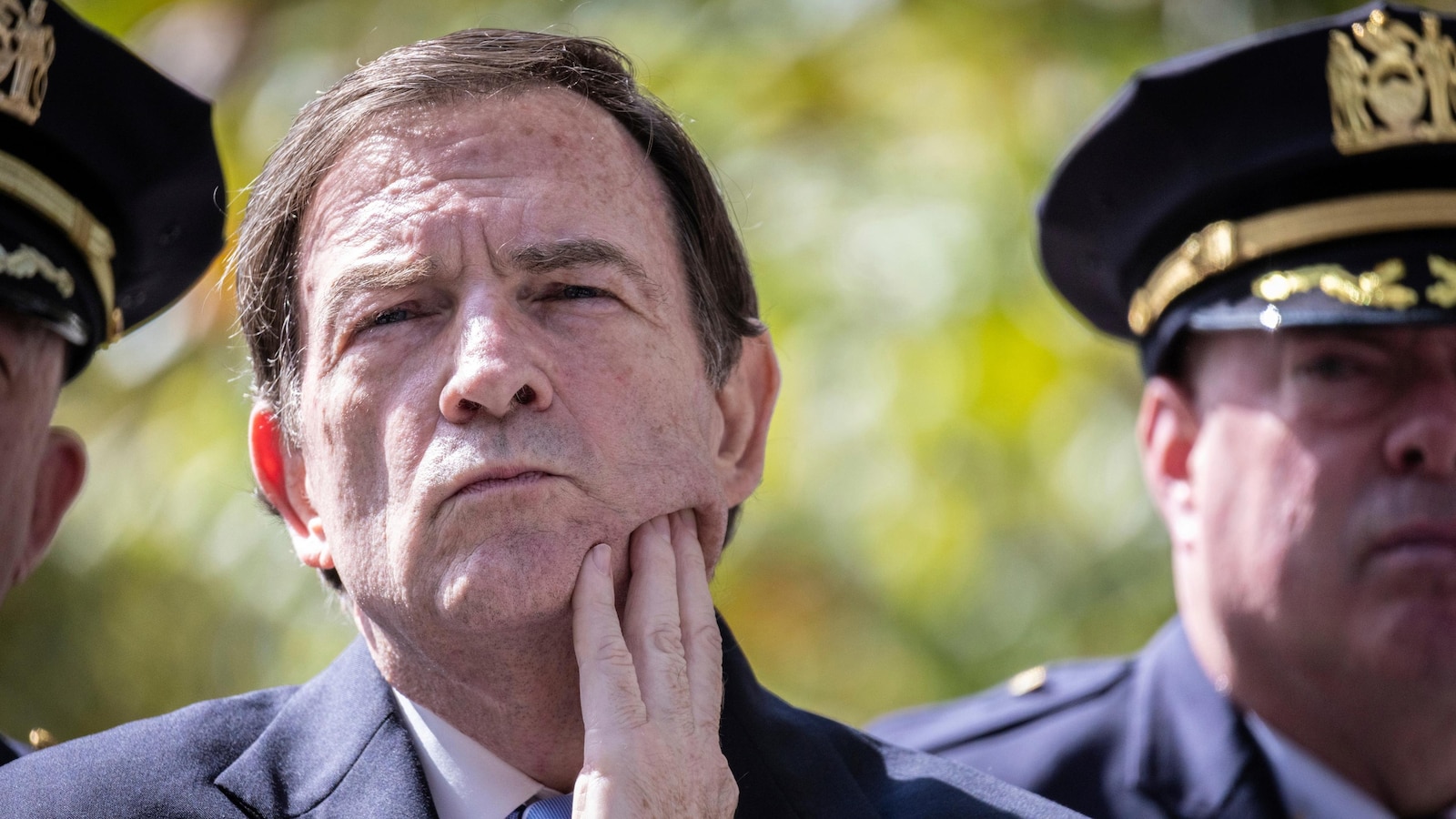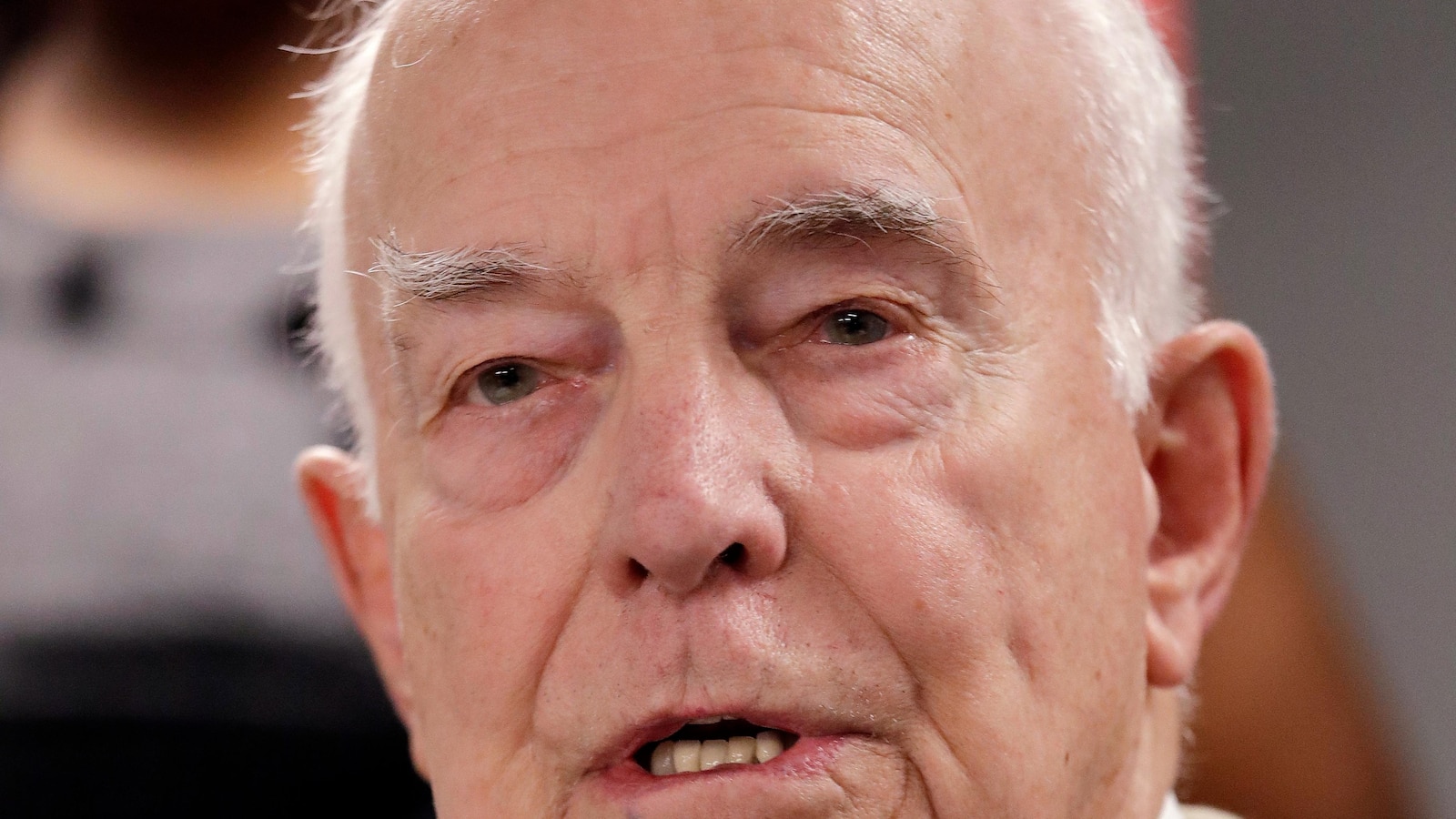Interruptions, distractions and multitasking led to a near-collision between an American Airlines flight and a Delta flight moving at 120 MPH down a runway at John F. Kennedy International Airport last year, according to a report released on Tuesday by the National Transportation Safety Board.
The agency’s abstract report on the Jan. 13, 2023, incident provided more details about what led to the incident and how a specialized detection system prevented a worse outcome.
Air traffic controllers cleared a Delta Air Lines 737 for takeoff on Runway 4L, however, 20 seconds after the Delta plane began its takeoff an American Airlines B-777 destined for London crossed the same runway without a clearance, according to the report.
NTSB investigators said numerous factors contributed to the American Airlines captain’s mistake, including “interruptions and multitasking that were happening on the flight deck during critical moments of ground navigation.”
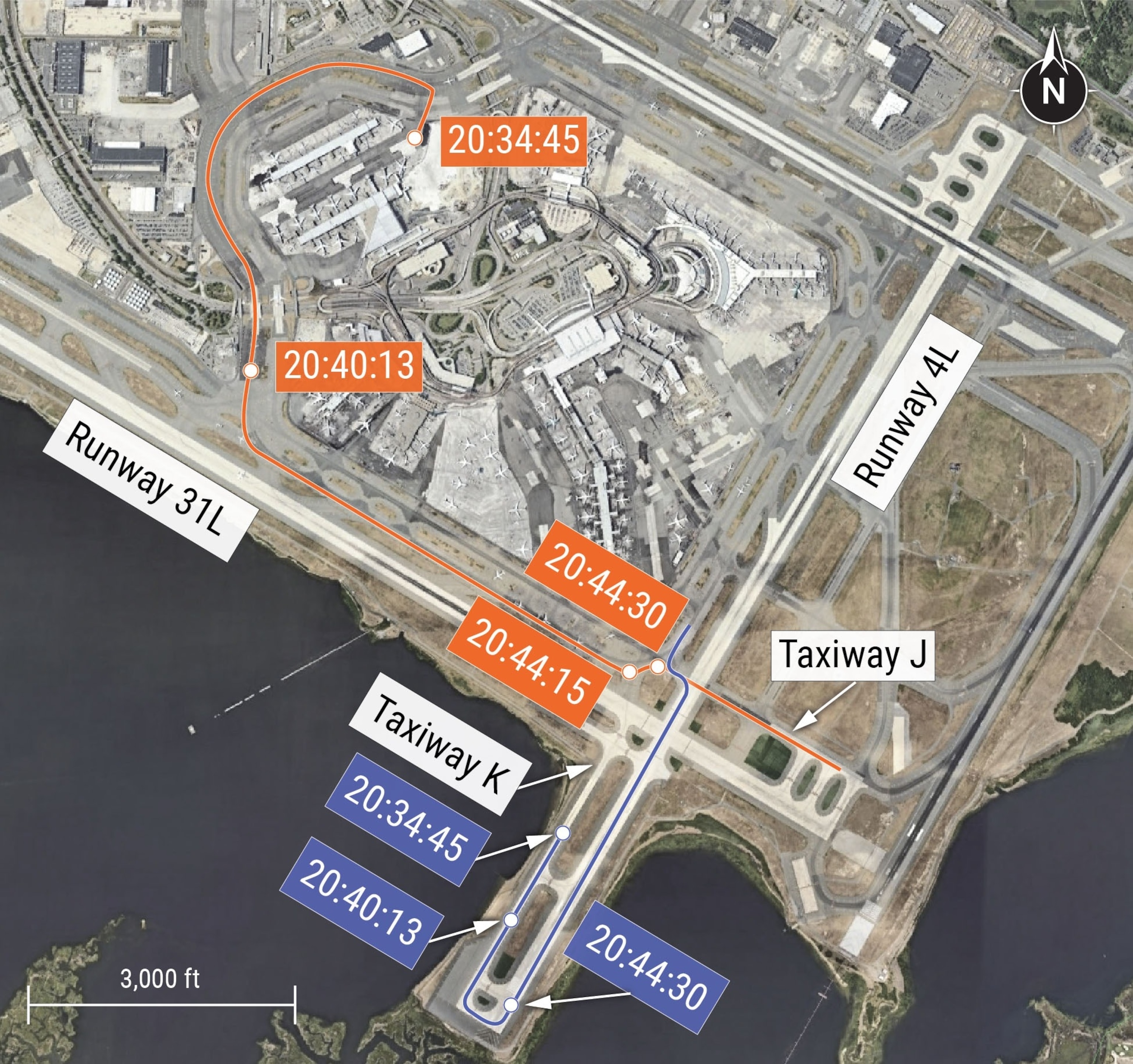
The taxi paths of the American B-777 (orange, terminal through taxiway J) and the Delta B-737 (blue, taxiway K and runway 4L), based on ADS-B data, with times annotated at select locations.
NTSB
“The other two flight crewmembers didn’t catch the captain’s error because they were both engaged in tasks that diverted their visual attention from outside the airplane,” the agency said in a statement.
Additionally, investigators said the ground controller who provided taxi instructions to the American flight, “didn’t notice the aircraft turned onto the wrong taxiway because he was performing a lesser priority task that involved looking down,” the report said.
The probe found that when the Delta flight accelerated down the runway, JFK’s Airport Surface Detection Equipment – Model X, or ASDE-X, issued aural and visual alerts in the air traffic control tower.
Trending Reader Picks
Five seconds after the alerts were issued, the controller canceled the Delta plane’s takeoff clearance, which prompted its pilot to decelerate as the American jet crossed in front of it, according to the NTSB.
The NTSB has pushed for ASDE-X technology to be installed at airports since 1991. JFK installed its ASDE-X in 2009 and is one of 35 major airports to have it equipped, according to the NTSB.
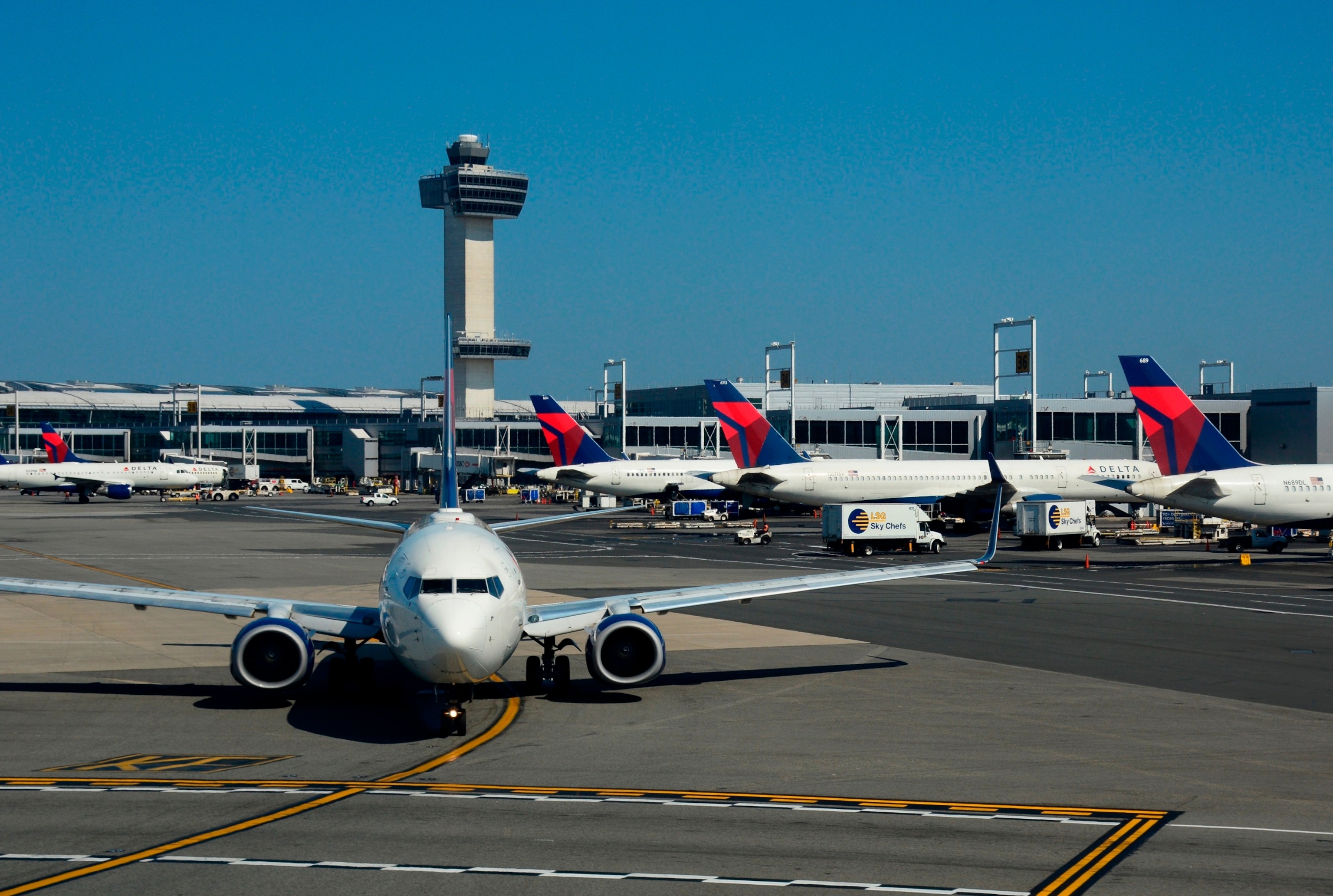
A Delta Airlines passenger jet taxis at John F. Kennedy International Airport in New York, Sept. 24, 2017.
Robert Alexander/Getty Images
“Our investigation also makes clear why we’ve long supported systems that warn flight crews of risks directly: because every second matters,” NTSB Chair Jennifer Homendy said in a statement.
The agency has issued several recommendations in light of the incident including encouraging flight crews to verbalize the number of the runway they are about to cross, and pushing aircraft and avionics manufacturers to develop an improved system that would alert flight crews of traffic on runways.
Additionally, the NTSB called on the Federal Aviation Administration to require all planes to be fitted with cockpit voice recorders that record 25 hours of audio instead of two hours.
The American flight’s recordings were lost in this case because the plane continued to London and the data was overwritten, according to the agency.
The National Transportation Safety Board (NTSB) recently released a report detailing the factors that contributed to a near-collision at John F. Kennedy International Airport in 2023. The incident, which occurred on a busy runway, involved two commercial aircraft that came dangerously close to colliding with each other.
According to the NTSB report, several factors played a role in the near-collision. One of the primary factors was miscommunication between air traffic controllers and the pilots of the two aircraft. The report found that there was confusion regarding the instructions given to the pilots, which led to a breakdown in communication and a failure to maintain proper separation between the two aircraft.
Additionally, the report highlighted issues with the runway layout and design at JFK Airport. The layout of the runways and taxiways at the airport was found to be complex and confusing, which made it difficult for air traffic controllers and pilots to navigate safely. This complexity contributed to the confusion that led to the near-collision.
The NTSB report also noted that human factors played a significant role in the incident. The report found that fatigue and stress among air traffic controllers and pilots may have contributed to the miscommunication and confusion that led to the near-collision. Additionally, the report highlighted the importance of proper training and procedures for air traffic controllers and pilots to prevent similar incidents in the future.
In response to the findings of the NTSB report, JFK Airport has implemented several changes to improve safety and prevent future near-collisions. These changes include updated training programs for air traffic controllers and pilots, as well as improvements to the runway layout and design at the airport.
Overall, the NTSB report on the near-collision at JFK Airport in 2023 serves as a reminder of the importance of effective communication, proper training, and human factors in ensuring the safety of air travel. By addressing these factors, airports and aviation authorities can work together to prevent similar incidents and ensure the safety of passengers and crew members.
